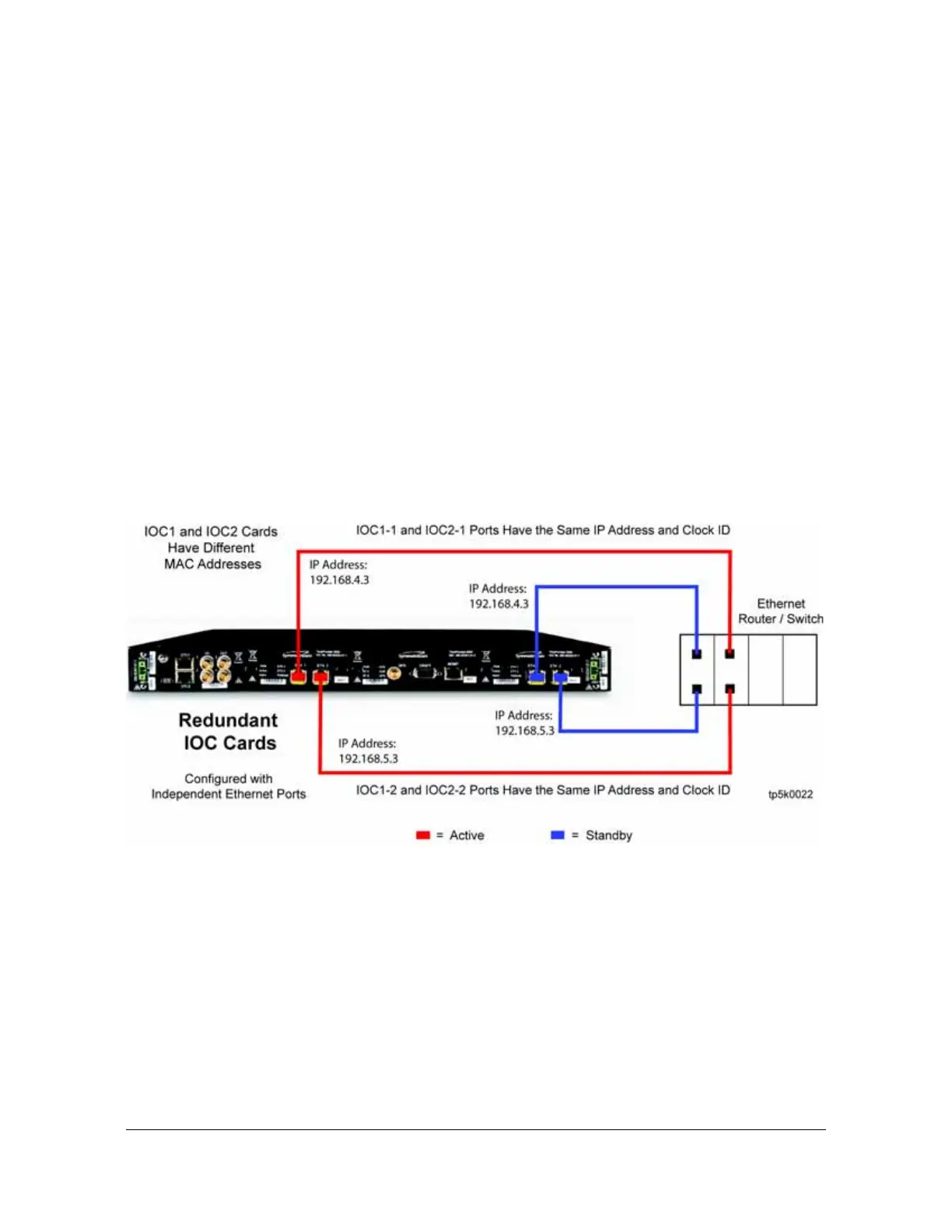484 TimeProvider 5000 User’s Guide 098-00028-000 Revision F – May, 2012
Appendix D Redundant IOC Cards
Parameters with IOC Card Redundancy
With IOC card redundancy, the Clock IDs are generated from the MAC addresses
for the ETH1 and ETH2 ports of the IOC card that was Active first. The first Active
card is typically the card in the IOC1 slot, as described in the section Setting the
Active IOC Card at Power Up, on page 487. If a switchover occurs, the Standby
card will become the Active card and use the Clock ID of the original Active IOC.
As long as a TP5000 chassis continuously has a powered IOC module in it
(assuming that the IOC has been powered long enough to take on Clock IDs), the
chassis will maintain the same Clock IDs for ETH1 and ETH2.
The Clock ID can also be manually assigned by the user with the CLI command "set
ptp clockid" command or via SNMP.
Clock IDs with IOC Card Redundancy and Port Redundancy
In port redundancy mode, IOC1 and IOC2 will share a single Clock ID. The bond0
port uses the MAC address of ETH1 and therefore the clock ID is based on the
ETH1 MAC address. See Figure D-3. In such a case, the chassis will maintain a
single Clock ID as long as a chassis continuously has a powered IOC module in it .
Figure D-2. Redundant IOC Cards With Independent Ethernet Ports

